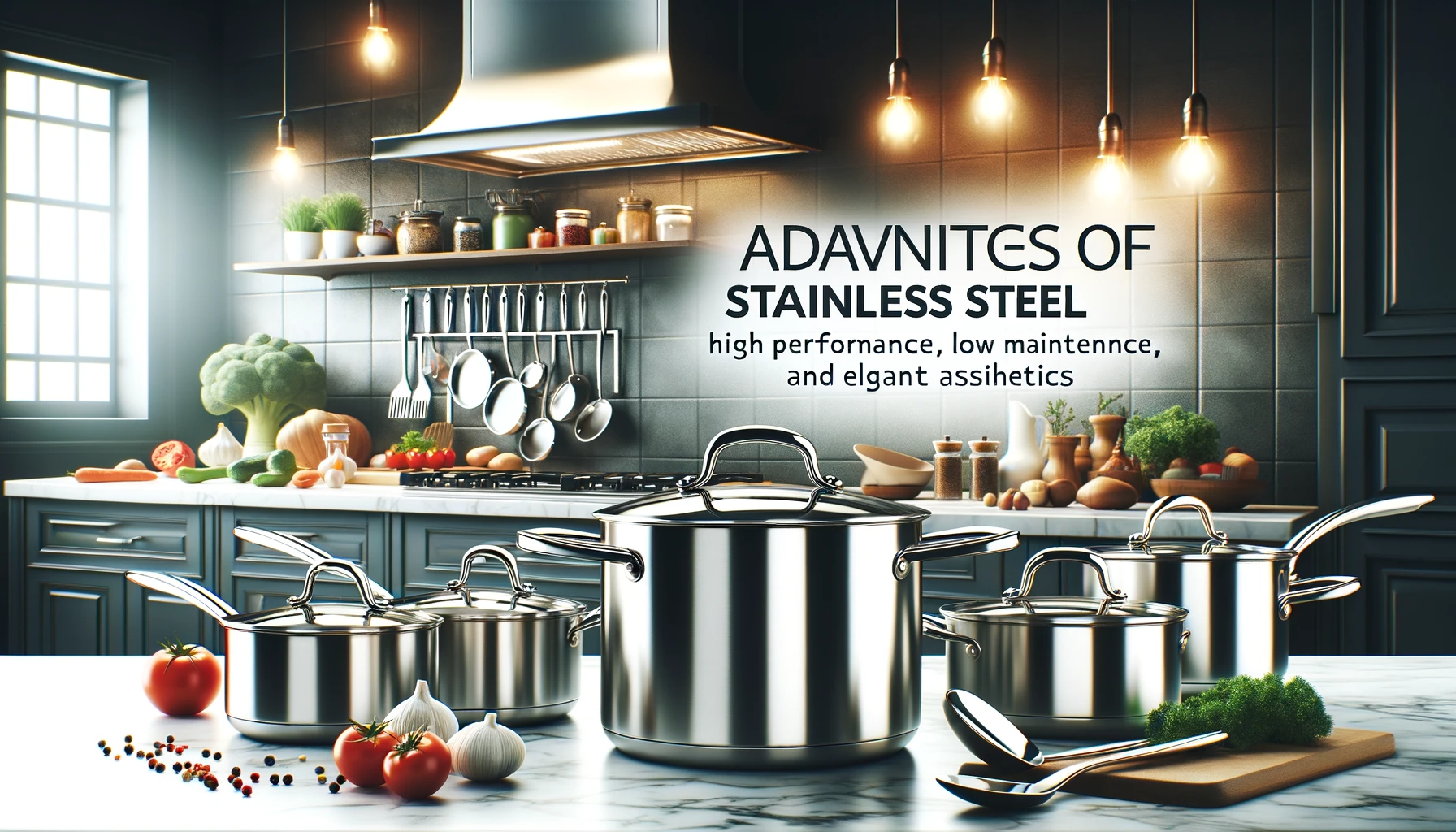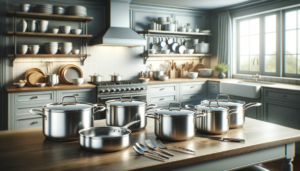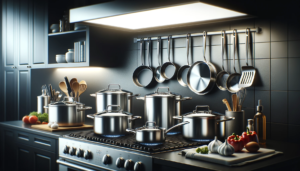With so many cookware options lining store shelves, deciding what to buy for your kitchen can get overwhelming fast.
But repeatedly replacing flimsy pans gets old quick too.
When it comes to identifying that perfect sweet spot combining high performance with low maintenance, stainless steel cookware checks all the boxes.
Let’s examine why quality stainless steel earns its reputation as an extremely durable, safe, affordable, and functional cooking vessel ready to handle virtually any recipe challenge imagination dares dish out.
Is Stainless Steel Cookware Good?

Without question, stainless steel represents an elite cookware material proving itself extremely good through durable long-term performance and versatile beginner-friendliness.
Stainless steel pots and pans deliver outstanding bang-for-buck value.
They combine rugged dependability even under punishing daily use with easy maintenance rivaling nonstick.
Excellent safety ratings reassure while sleek aesthetics design options reflecting refined style.
For all these reasons professional chefs and home cooks overwhelming consider quality stainless steel an extremely good choice when selecting lasting pans and pots elevating their culinary potential.
Here are the reasons in depth why stainless steel cookware is good.
1. Stainless Steel’s Extreme Durability
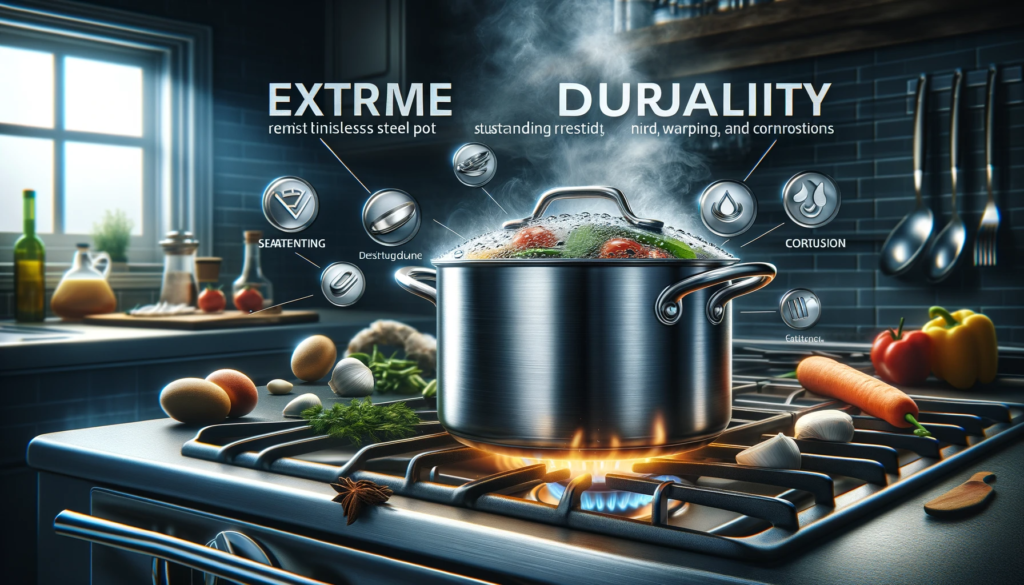
Stainless steel cookware is prized by both professional chefs and home cooks for its extreme durability.
Pots and pans made from stainless steel are able to withstand the rigors of daily kitchen use exceptionally well.
They resist denting and warping better than other popular cookware materials like aluminum, copper, or ceramic.
With proper care and maintenance, quality stainless steel cookware retains its solid shape and performance for many years of regular cooking.
Even after thousands of hours accumulated over a hot stove subjecting it to high heat from searing, simmering, sautéing, and more, stainless steel emerges resilient against degradation.
Minor surface scratches may accumulate in the stainless steel but rarely penetrate deeper in a way impacting function.
The sturdy construction ensures the cookware withstands being dropped without easily breaking or becoming misshapen.
Handles and other components are strongly riveted in place to avoid loosening over time.
2. Stainless Steel Has Superior Even Heating
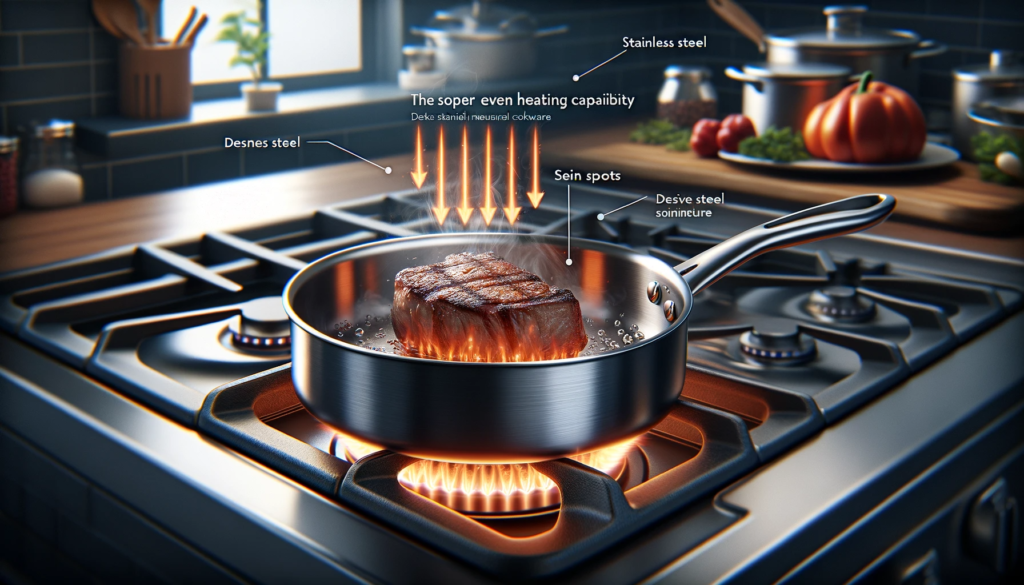
Stainless steel earns praise for spreading heat energy remarkably evenly across pots and pans.
This means ingredients brown and cook far more uniformly with few frustrating hot spots burning in some areas while other portions lag behind.
The even heating reliability helps prevent accidentally charring parts of a dish while the rest remains underdone.
Stainless steel achieves such effective heat distribution through excellent conductive properties.
The dense steel molecular structure efficiently transfers heat outward from the cookware base upward along the sides.
Everything inside the pot or pan warms at a similar pace rather than developing significant temperature variances leading to uneven cooking.
Some top-tier stainless steel cookware lines enhance the even heating performance further through clever construction.
By permanently sandwiching an additional highly conductive metal like aluminum or copper core between stainless steel interior and exterior layers, these hybrid pans merge stainless steel’s durability with a core material transferring heat energy especially efficiently outward.
This clever arrangement makes the combinations perform better than either metal individually.
3. Effortless Cleaning and Care

Caring for stainless steel cookware proves refreshingly easy thanks to the slick, nonporous surface quality.
Without all the tiny cracks and crevices of more porous materials, food residue has difficulty adhering tightly to stainless steel during cooking.
Even ingredients with a notorious tendency to stubbornly stick to cookware like eggs, cheese, or batter wipe away cleaner after cooking.
The surface also resists micro-abrasions well so that abrasive scrub brushes rarely become necessary for removing stuck-on residue.
And stainless steel’s corrosion resistance minimizes reactions between the metal itself and acidic ingredients like tomatoes or vinegar during heating.
This further reduces the likelihood of stubborn staining over time.
Simply using hot water, mild detergent, and a soft sponge or cloth is typically sufficient for making even heavily-used stainless steel pots and pans shine like new again.
The ease of cleanup combined with stainless steel’s durability makes caring for stainless steel relatively hassle-free compared to high-maintenance options like cast iron requiring meticulous re-seasoning.
4. Excellent Safety Rating
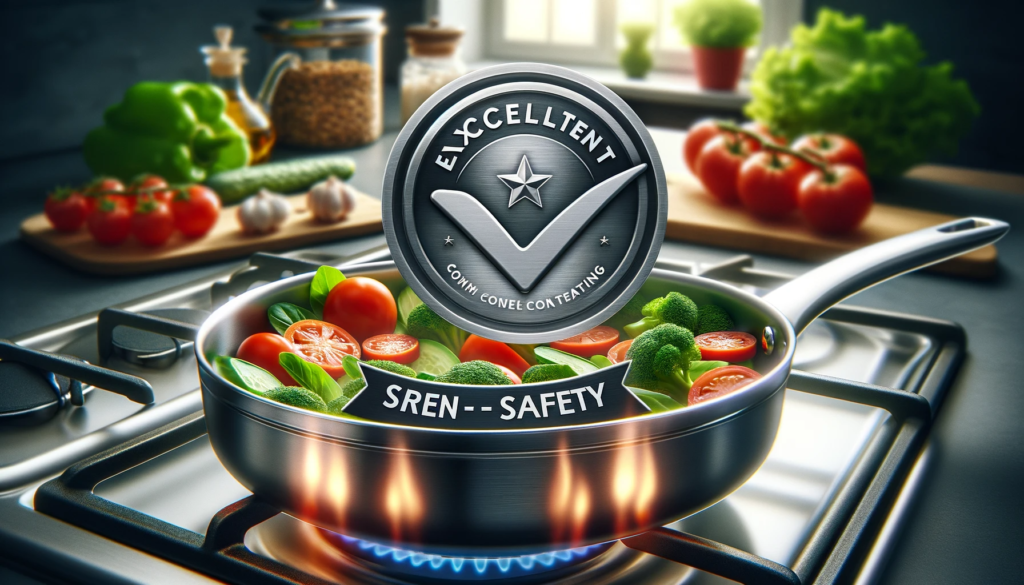
When it comes to cookware materials considered reliably healthy and safe for meal preparation, stainless steel earns among the highest grades for safety.
The inorganic steel construction carries minimal risk of hazardous chemicals leaching out during cooking.
This remains true even when exposed to very high pan temperatures above 500°F for searing meats or other foods.
By contrast, specialized nonstick pans apply synthetic chemical coatings like PTFE (polyterafluoroethylene) or ceramic onto cookware surfaces using binding resins helping them adhere.
Unfortunately, some chemicals in these nonstick coatings can begin leaching at high temperatures potentially posing health risks if ingested.
Stainless steel avoids this hazard entirely, making it a trusted choice for cookware safety.
Beyond home kitchens, stainless steel pans and pots are valued in commercial kitchens partly for this reason.
Professional chefs often must prepare dish components in large batches requiring lengthy simmering or reductions.
Using rugged stainless steel equipment allows extending cook times as needed fully confident the stainless steel will not compromise food quality or safety even after hours of sustained high heat.
5. Reasonable and Worthwhile Cost
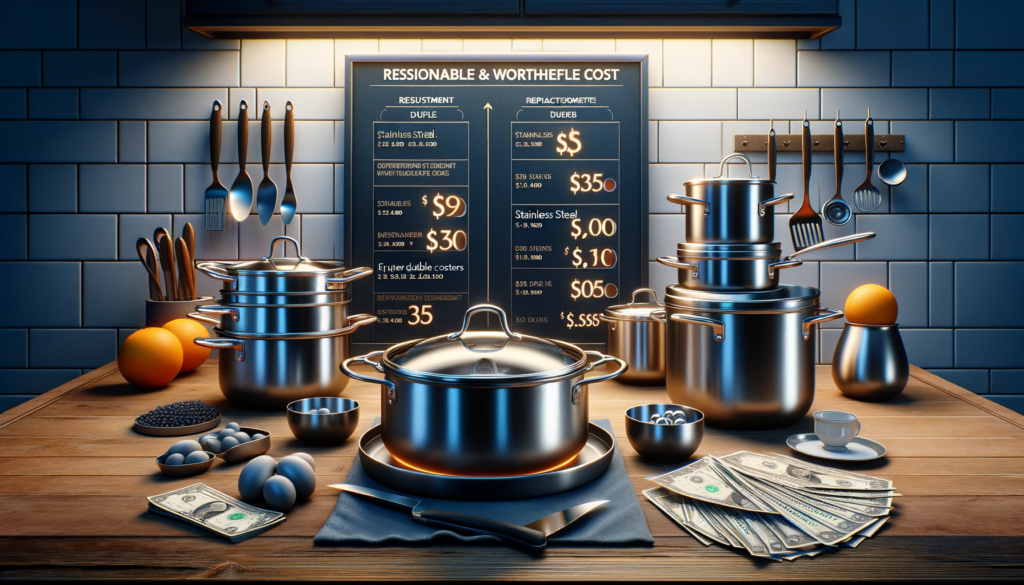
Although generally less inexpensive upfront than options like basic aluminum or ceramic nonstick pans, stainless steel cookware delivers excellent value relative to its cost once useful lifespan enters the equation.
Considering quality stainless steel pots and pans easily outlast cheaper alternatives by many extra years thanks to their ruggedness, investing in durable stainless steel cookware is often money wisely spent.
That moderately higher initial price point simply reflects the unmatched longevity and resilience consumers gain in exchange.
Rather than continually replacing warped, badly scratched, or broken cookware pieces made with less sturdy materials, good stainless steel allows home cooks to prepare great-tasting meals reliably for decades before replacement becomes necessary.
Weighing total cost against total years of usable service life shows quality stainless steel cookware delivers very good value compared to other kitchen equipment.
6. Sleek and Sophisticated Styling
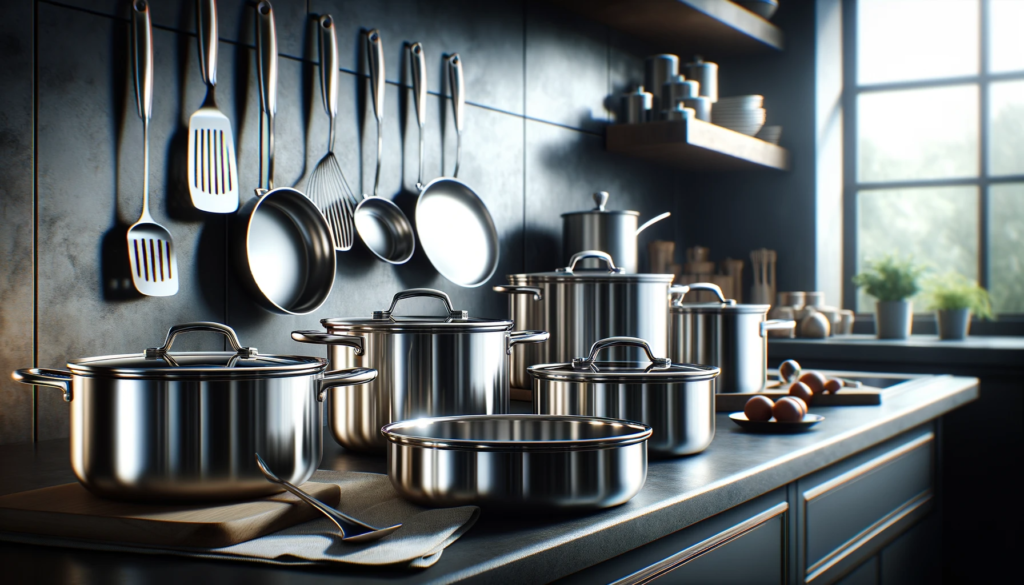
Beyond purely practical performance considerations, stainless steel cookware simply looks fantastic.
The commercial-grade metallic sheen stainless steel offers provides an elegant yet understated foundational element capable of tying together both traditional and ultra-modern kitchen decors.
Brushed steel finishes add an appealing visual texture while resisting smudges and fingerprints during use.
Stainless steel cookware manufacturers offer numerous eye-catching surface options spanning the style spectrum from classic to contemporary.
And combining stainless steel with alternative materials like cast iron or ceramic through creative hybrid designs expands available colors and aesthetic configurations even further.
With so many gorgeous styles and finishes available, it is easy finding beautiful stainless steel cookware well-matched to specific kitchen aesthetics and color schemes.
Conclusion
Stainless steel cookware clearly stands out from the crowd, offering unmatched durability and versatility to satisfy both professional chefs and novice home cooks alike.
With even heating, ease of cleaning, safety assurances, visual appeal, and cost-efficiency wrapped into one tidy package, quality stainless steel delivers tremendous value and will continue shining as a kitchen staple for years to come.
